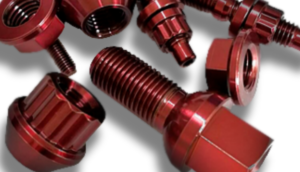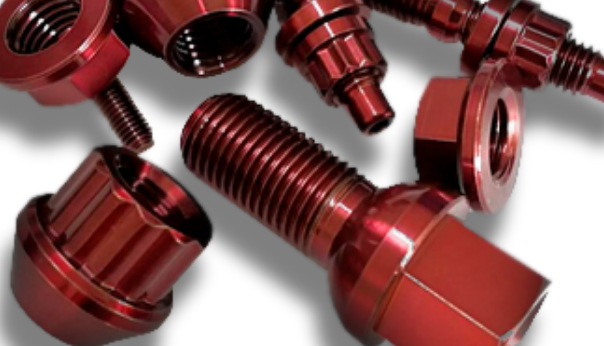In the quest for higher performance, greater endurance, and reduced injury risk, athletes and sports professionals are increasingly turning to science and technology. One of the key materials driving innovation in sports science and equipment design is titanium. With its exceptional strength-to-weight ratio, corrosion resistance, flexibility, and biocompatibility, titanium has rapidly evolved from an aerospace and medical material into a game-changer in the sports world.
Whether it’s lightweight racing bikes, high-performance golf clubs, or surgical-grade implants for injury recovery, titanium is revolutionizing how athletes train, perform, and recover. This article explores how titanium is shaping the future of sports equipment, enhancing biomechanics, and pushing the boundaries of sports science.
Why Titanium is a Game-Changer in Sports Applications
To understand why titanium has become a preferred material in sports, we must first explore its core attributes:
Key Advantages:
- High Strength-to-Weight Ratio – Provides strength without unnecessary bulk.
- Corrosion Resistance – Maintains performance even in sweat, water, or salty environments.
- Fatigue and Impact Resistance – Withstands repeated stress and sudden impact.
- Flexibility and Elasticity – Allows for shock absorption and improved force transmission.
- Biocompatibility – Safe for use in implants and injury recovery treatments.
These properties allow manufacturers and sports scientists to create equipment that is lighter, more durable, and performance-optimized, ultimately helping athletes reach peak performance while minimizing injury.
Titanium in High-Performance Sports Equipment
One of the most visible uses of titanium in sports is in premium athletic gear and sportswear components. From professional cycling to tennis and golf, titanium is a staple material for elite equipment.
1. Cycling
Titanium frames are known for their unmatched balance of strength, weight, and comfort. Unlike aluminum, which may crack under stress, or carbon fiber, which can shatter upon impact, titanium provides flexible durability.
Benefits for Cyclists:
- Absorbs road vibrations for smoother rides
- Resistant to corrosion—ideal for all-weather racing
- Long-lasting with low maintenance needs
2. Golf
Titanium is the material of choice for driver heads and club shafts, especially in professional golf.
Advantages:
- Larger, lighter clubheads for increased swing speed
- Better energy transfer to the ball for longer drives
- Greater customization due to titanium’s moldability
3. Tennis and Racket Sports
Titanium composites are used in tennis rackets to enhance frame stiffness and control without adding weight.
Improvements:
- Enhanced precision and responsiveness
- Better shock absorption during ball impact
- Reduced arm strain for players prone to injury
4. Winter Sports
Ski and snowboard bindings, edges, and poles often incorporate titanium for its lightweight resilience.
5. Motorsports and Racing
Titanium is used in helmets, protective gear, suspension components, and engine parts for its ability to handle high stress and heat without failing.
Enhancing Sportswear and Protective Gear
Beyond equipment, titanium is also making its mark in athletic wearables and protective gear, improving comfort, safety, and performance.
Titanium in Wearable Tech and Gear:
- Titanium-infused fabrics (often found in compression garments) are believed to reflect body heat back to muscles, promoting circulation and recovery.
- Lightweight titanium armor and padding in contact sports such as football and hockey improve protection without restricting movement.
- Eyewear and helmets made with titanium frames are more durable, stylish, and lightweight—an ideal combination for competitive athletes.
Rehabilitation and Recovery: Titanium in Sports Medicine
Injuries are inevitable in professional and recreational sports, but titanium is playing a crucial role in accelerating athlete recovery.
1. Orthopedic Implants
Titanium is the gold standard for orthopedic hardware, including:
- Joint replacements (hips, knees, shoulders)
- Fracture fixation plates and screws
- Spinal fusion devices
These implants promote osseointegration—the direct bonding of bone to titanium—ensuring quicker healing and a lower risk of rejection.
2. Biomechanical Research
Sports scientists use titanium-based tools to study how the body moves under different forces and conditions. Biomechanical sensors and implants help researchers understand:
- Impact forces during high-speed movements
- Muscle and joint stress during repetitive actions
- Optimal load and recovery thresholds
This data leads to more effective training programs, better equipment design, and injury prevention strategies.
Boosting Athletic Performance Through Titanium Innovation
As sports evolve, titanium continues to support the cutting edge of performance science.
Examples of Advanced Applications:
- Exoskeletons and assistive devices made with titanium components are helping athletes train longer and recover faster.
- Biomechanically-optimized prosthetics use titanium for elite-level Paralympic athletes, enabling sprinting, jumping, and even swimming.
- Aerodynamic optimization in sports like cycling and speed skating is supported by titanium components tailored to reduce drag and improve efficiency.
Whether in performance analysis or wearable technology, titanium is driving quantifiable improvements in how athletes move, train, and win.
Sustainability in Sports Equipment Manufacturing
Titanium also contributes to the sustainability goals of the sports industry. With growing environmental concerns, manufacturers are turning to durable and recyclable materials—and titanium fits the bill.
Sustainable Advantages:
- Long lifecycle reduces the need for frequent replacements
- 100% recyclable with no loss of material properties
- Lightweight transportation reduces carbon footprint in distribution
As companies aim to align with environmental, social, and governance (ESG) standards, titanium offers both performance and ecological benefits.
Challenges and Future Outlook
Despite its many advantages, titanium is more expensive to process and fabricate than other materials, which can limit its accessibility in mainstream sports equipment. However, innovation is closing this gap.
Solutions on the Horizon:
- 3D printing of titanium parts for faster, cost-effective prototyping
- Hybrid titanium composites that blend strength with affordability
- Advanced surface treatments that enhance durability while minimizing material use
These developments will make titanium-based sports technologies more accessible to amateur athletes and general consumers, further expanding its impact.
Conclusion: The Future of Sports Runs on Titanium
From elite performance gear to injury recovery tools and wearable tech, titanium is revolutionizing the world of sports science. Its exceptional properties and adaptability are enabling athletes to push the boundaries of speed, strength, and endurance like never before.
As research and manufacturing innovations make titanium more affordable and versatile, its role in sports will only continue to grow. In the coming years, expect to see titanium not only in the hands of professional athletes but also integrated into the everyday equipment of fitness enthusiasts and rising sports stars.
Titanium isn’t just a material—it’s a performance enhancer, a protector, and a scientific ally. In the race toward better sports performance and safer competition, titanium leads the way.

Also Read :
